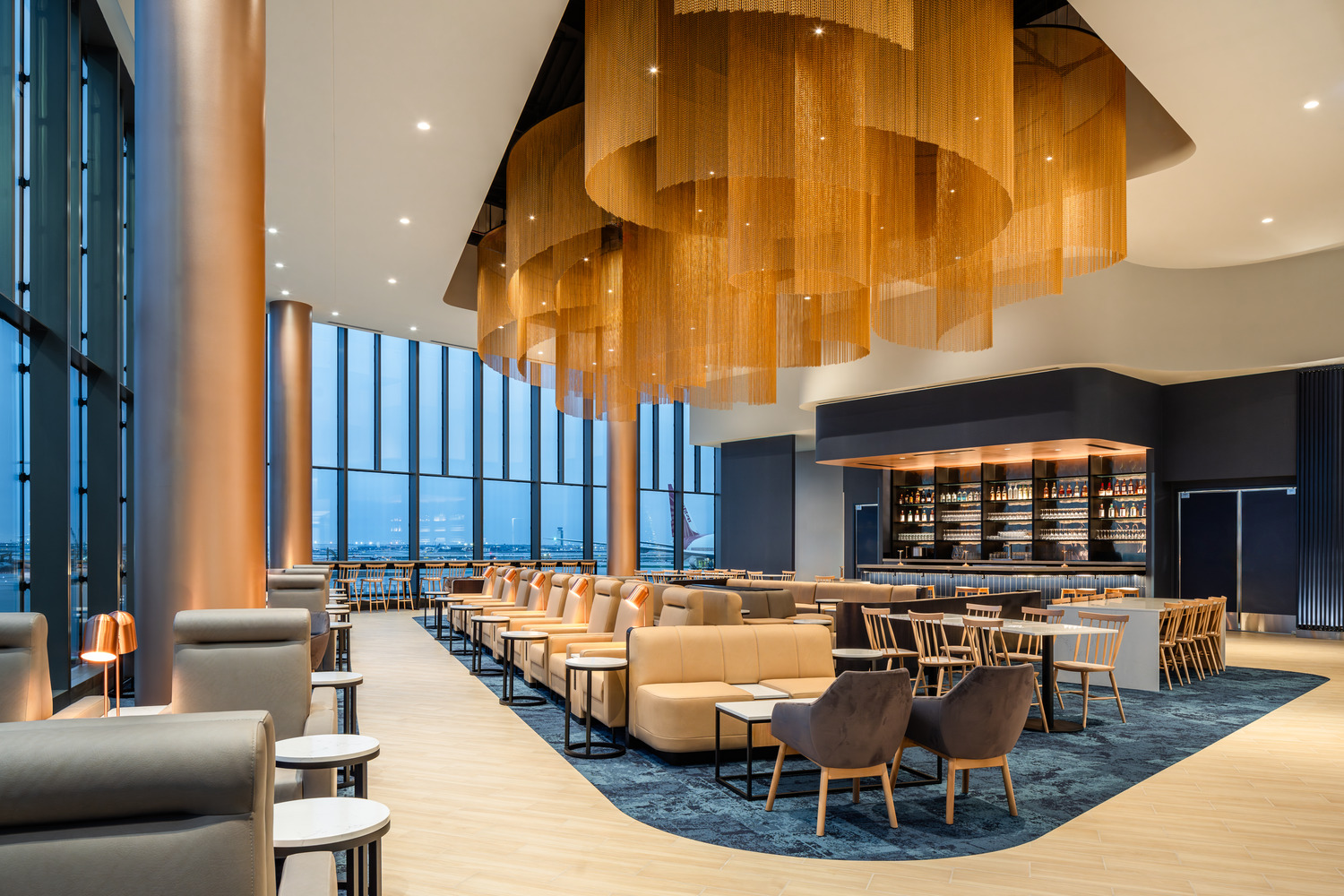


13 June 2022


New York’s LaGuardia Airport is one of the 25 busiest airports in the world, serving more than 25 million travelers a year. LaGuardia is also more than 80 years old and has been undergoing extensive renovations and reconstruction since 2006 to transform it into a modern, welcoming space for the millions of people who pass through its gates annually.
Airport renovations can be difficult, especially if the space remains operational throughout construction. Closing down is not an option for one of the busiest airports in the world. As a result, the teams working on LaGuardia’s redevelopment need to be highly experienced in not only commercial real estate, but aviation as well. Clune was proud to be part of this team and was responsible for building seven of the concessions that will be in Concourse E of what will eventually be the airport’s new Terminal C.
“It’s amazing to be a part of this massive project,” Clune Senior Project Manager Pasquale Perrini said. “Turning an outdated airport that was a logistical nightmare into a new, good-looking, logistically well-planned space is something Clune was tailor-made to do.”
Once Clune’s part of the project is completed, there will be a total of seven new interior restaurant concessions between the new Concourse E and Head House areas for Delta. The existing terminals were outdated and in dire need of renovations, Perrini added. Specifically, they needed to be transformed into modern, family-oriented and energy-efficient environments where people can relax and enjoy good food and drinks while waiting to fly in or out of NYC.
Clune Senior Project Manager Teddy Kalaboukas said the company was the best fit for this particular project because Clune not only has ample experience in constructing high-end retail in NYC, but the team has also worked on other airports nationwide including in Chicago and Los Angeles. He said that OTG and Delta were looking for a partner that understands construction management and could help them remain cost-effective while still delivering a high-quality product.
“We’re all about quality control, diving deep into the financials and helping clients save as much money as we can while working with the subcontractors on a high level,” Kalaboukas said.
The team faced several unique challenges during the project. Many of these challenges revolved around ensuring proper communication and coordination between the high-profile teams involved in transforming LaGuardia. To make sure everyone was on the same page, Clune needed to coordinate with the base building contractors, the Port Authority and Delta on mechanical, engineering and plumbing plans, and infrastructure details.
“This can go wrong quickly and can expose all parties to heavy additional costs if not discussed thoroughly, on a day-to-day basis,” Kalaboukas said. “Our team spent a lot of time in separate field huddles and virtual meetings with all parties, to make sure we avoided potential conflicts and additional costs. All of this was done while working around countless workers through the pandemic as well.”
Perrini added that the Clune team also had to navigate several logistical challenges, from coordinating crane pick lifts for roof transformers and HVAC equipment, to bringing in kitchen equipment, millwork and furniture through the curtain wall. Clune worked closely with the base building contractors and curtain wall contractors to remove and reinstall windows as required.
Clune’s commitment to technology has played a key role throughout this complex project.
“Clune is a major proponent in thinking outside the box and utilizing the most up-to-date technology,” Perrini said. “Our entire team had live access to the drawings and specifications on tablets, phones and laptops.”
Clune has been using construction productivity software to stay on top of field changes, addendums and sketches issued by the design team in real time. The software allows for the most up-to-date version of a drawing or sketch to supersede the previous one. This way, everyone stays in line with the latest information as soon as it is issued, with no time lost.
“From a design team standpoint, we utilized a sharing file software which allowed for easy uploading of drawings, submittals and RFI’s. We set up a workflow for the team for the sample and submittal review process to assign responsibilities and a timeline for all to review in an expedited manner,” Kalaboukas said. “This helped the project and team stay organized and helped us focus, discuss and address open items weekly in an expedited manner.”
The project is still ongoing, with the most substantial part of construction expected to be completed in a few weeks, Perrini said. He credited the team’s success, in part, to the fact that they are always staying in regular communication with not only each other and other stakeholders to ensure all deliverables are coming in on time.
“We’re meeting all of our milestones and we’ve gotten a lot of praise from not only the client, but other subcontractors as well, for how efficiently the project is being run,” Kalaboukas said. “It’s going well, and we’re almost there.”
Learn more about Clune’s Airport/Aviation capabilities and portfolio here.
Written in collaboration with Julia Troy, Bisnow